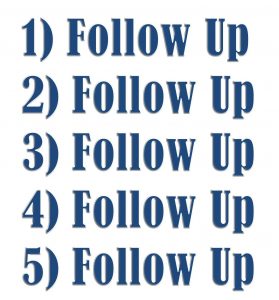In part 1 of this blog https://www.thereidmethod.com/top-sales-performers-do-these-20-things-best-part-1of-2/ we looked at the first 10 of 20 principles top sales performers practice to always lead the sales charts and in income.
There’s no accident that fundamentally having a disciplined approach including some daily rituals play a significant role in your level of consistency and success. I can attest to the fact that when I personally have less than stellar performances or below average months, I can usually figure out where I went off the rails. When this happens I often revert back to some basic success principles which are included in these blogs.
This month I had a below average September. Even though there’s is some time left in the month I have already mapped out a solid plan to crush October. With a list of vetted prospects ready, strategies and tactics laid out and ready to be applied the minute October starts’, I can’t wait to get started. Look out for my documentation of October sales and results in the 1st week of November.
Here are the final 10 things that top performers do best that set themselves apart for long term success, a winning attitude, and top five percent incomes.
- FROM OBJECTION TO OPPORTUNITY: Always be prepared for objections and don’t perceive them as problems or roadblocks. Top performers love objections because they pave the way to address key issues in order to close more deals. Objections are not a negative thing; instead, they provide top performers with strategic negotiating points.
- NEXT STEPS: Top performers always establish next steps because in today’s busy environment, decision makers and shoppers are always on the go. It’s always important to establish next steps while you have the client’s attention, or you could lose them for good. Book follow-up appointments, schedule return calls and establish your objectives for your next contact to progress the conversation towards a deal solution.
- FOLLOW UP: Within 24 hours of your initial meeting or phone conversation
 unless otherwise agreed with your client, it is crucial that you follow-up with them. Many sales are lost right here because the average salesperson simply does not conduct proper follow-up within a timely manner. Following up doesn’t have to be a lot of work. It could be as simple as an email to confirm next steps, a call to review key details, or to reconfirm an expected outcome of next meeting or call.After reading many stats on sales follow-up and closing ratios, I then decided to conduct my own case study in October 2014. My study which is published in my new book, https://www.thereidmethod.com/products/ reaffirmed that to follow-up effectively, you must plan and strategize your follow-ups. This will ensure you’re progressing through the sales process towards a deal. To get to the point of “you have a deal” significantly increases after the fifth contact or exchange. The problem is most sales people don’t make it past two contacts, and almost 50 % percent may only follow-up once or none at all. How many times do you follow up before you give up?
unless otherwise agreed with your client, it is crucial that you follow-up with them. Many sales are lost right here because the average salesperson simply does not conduct proper follow-up within a timely manner. Following up doesn’t have to be a lot of work. It could be as simple as an email to confirm next steps, a call to review key details, or to reconfirm an expected outcome of next meeting or call.After reading many stats on sales follow-up and closing ratios, I then decided to conduct my own case study in October 2014. My study which is published in my new book, https://www.thereidmethod.com/products/ reaffirmed that to follow-up effectively, you must plan and strategize your follow-ups. This will ensure you’re progressing through the sales process towards a deal. To get to the point of “you have a deal” significantly increases after the fifth contact or exchange. The problem is most sales people don’t make it past two contacts, and almost 50 % percent may only follow-up once or none at all. How many times do you follow up before you give up? - FILL YOUR PIPELINE: “Always be closing” is a popular maxim in sales; I say you should always be networking and prospecting as well. In order to keep the pipeline flowing, top performers set prospecting and networking time aside every week to ensure they stay connected and productive in the long term.
Leads can come from several sources, such as referrals, your existing portfolio, community events, sales calls, sending out follow-up letters and emails, social media and networking events. - DEAL WITH DECISION MAKERS: Top performers know that closing sales requires dealing with the decisions makers most often which is why they don’t waste time seeking middlemen or front-line gatekeepers. They always find a way to the source to get a decision. When I ran a marketing company from 2004 -11, I often got involved with training our telemarketers who were in charge of scheduling appointments. One of the many principles I taught them was to effectively get past the gatekeeper by assertively and confidently asking for the decision maker or contact directly by name when they were available. This approach often communicates that you’re already connected to the decision maker and not just calling for the first time.
- TREAT THE GATEKEEPER WITH RESPECT: Sometimes to get to the decision make you have to go through an assistant. Having that front-line person as your ally is better than them as a major obstacle. The end result is always determined by how you conduct yourself during the first point of contact. When you’re attempting a sales call without the benefit of a direct contact name, you need to get the gatekeeper on your side within seconds. You can do this by complimenting their professionalism, thanking them for their assistance, and politely and directly asking who’s in charge of the relevant department. Always be polite and appreciative because treating the gatekeeper with respect and courtesy will usually go a long way.
- KEEP IN TOUCH: Top performers always keep in touch with their clients or prospects, dedicate time to follow up, ask for referrals and check in from time to time. It’s about keeping yourself in the back of their minds so that any thought of your product or service will serve as a reminder to contact you first. I have clients from 25 years ago who still contact me for advice even when my product or service may not be what they’re looking for because of the trust I built with them over the years. Buyers today are looking for their trusted guide. You need to ask yourself; are you that person?
- BE A TRENDSETTER: Being a top performer means doing things better than your peers or co-workers. They set trends and take initiative which co-workers and others follow. You will discover with experience that it’s easier to lead after you’ve demonstrated and achieved measurable results. Top performers also provide creative ideas to the organisation and make others around them better. For example, I share and teach my peers many ideas and systems that I improved or initiated so that we can all grow a bit more organisationally as a better team.
- MANAGE YOURSELF: Autonomy is a key characteristic of top performers. A top performer will more than likely have a manager to report to, but for the most part they require little or no supervision. High-performance employees manage their time well, complete their workload and learn from their experiences to plan ahead with a great deal of autonomy which is why management will often rely on them more for ideas and mentorship to others.
- NETWORKING: Top performers are people-oriented and possess strong networking and relationship-building skills. They’re confident when reaching out to others within their organization, and turning to outside sources to gather information, gain ideas and build more business opportunities. Thus they are contributing even more to the organization for the “Kaizen” (Japanese word meaning continuous improvement) effect.
Stay tuned for more blogs in October and November as I document the last quarter of 2016. Sign up and get the Sales Mastery Blog Series and Tip of the Week of modern strategies, tactics, advice and tools to become a top super achiever in sales today! https://www.thereidmethod.com/blog/
 EVEROLD REID is a Lease Renewal Advisor at Lexus of Oakville with over 26 years’ experience working in retail automotive industry, advertising and real estate marketing initiatives across North America and the Caribbean. Throughout his career, he developed a set of proven best practices that propelled him to become a consistent top sales performer and leader in fast-changing and competitive markets.
EVEROLD REID is a Lease Renewal Advisor at Lexus of Oakville with over 26 years’ experience working in retail automotive industry, advertising and real estate marketing initiatives across North America and the Caribbean. Throughout his career, he developed a set of proven best practices that propelled him to become a consistent top sales performer and leader in fast-changing and competitive markets.
Subscribe to the Sales Mastery Blog Series and access more recent posts:
- Top Sales Performers Do These 20 Things Best! (Part 1of 2)
- 5 Steps to Serious Personal Development to Dramatically Improve your Career.
- 7 Ways to Get Your Sales Action Plan Back on Track and still Crush 2016!
- Choosing Automotive Sales As A Career: Part 2 of 2
- Choosing Automotive Sales As A Career: Part 1 of 2
- TADA HOTLINE Magazine Q&A




Recent Comments